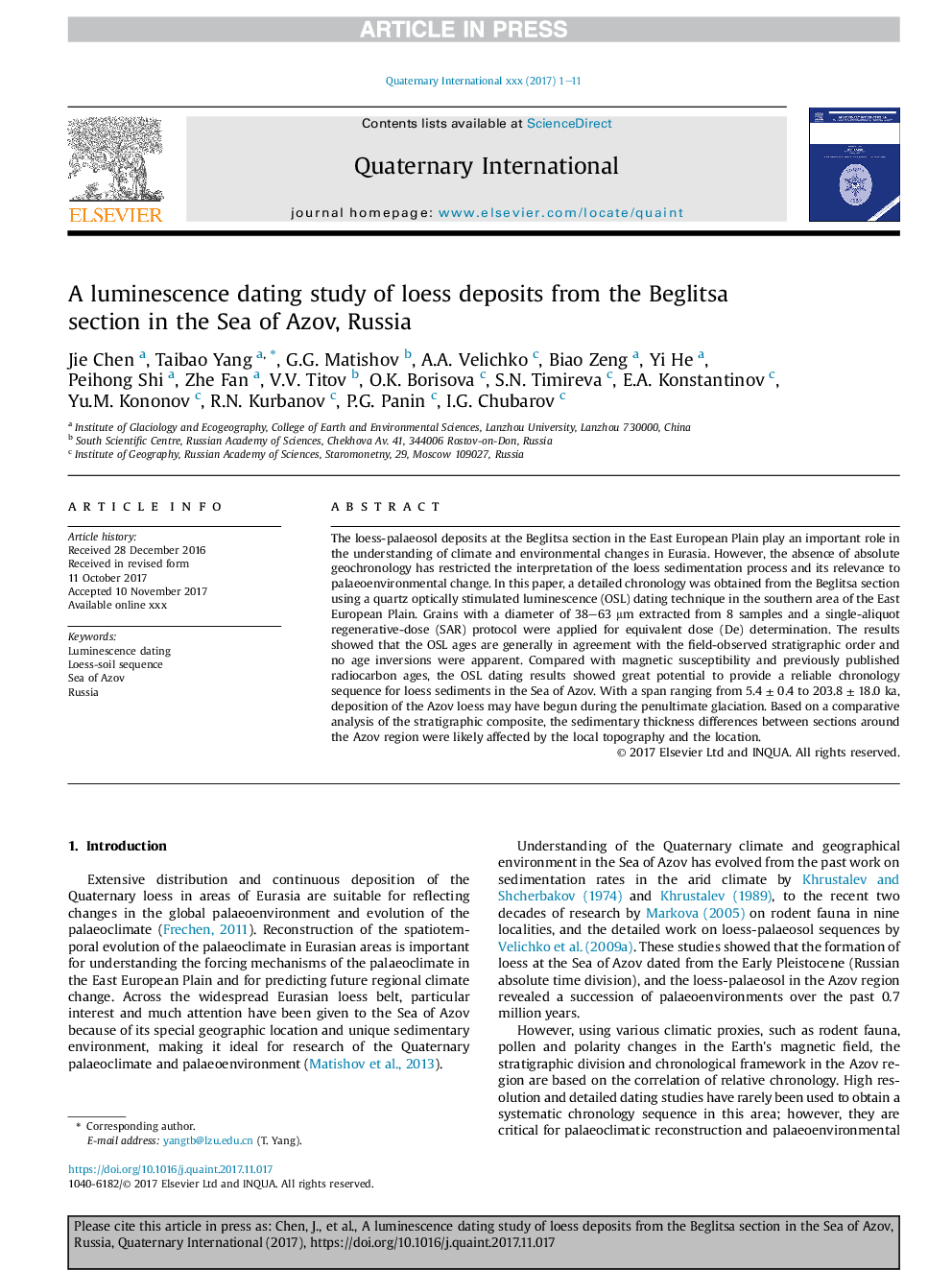| Article ID | Journal | Published Year | Pages | File Type |
|---|---|---|---|---|
| 7449456 | Quaternary International | 2018 | 11 Pages |
Abstract
The loess-palaeosol deposits at the Beglitsa section in the East European Plain play an important role in the understanding of climate and environmental changes in Eurasia. However, the absence of absolute geochronology has restricted the interpretation of the loess sedimentation process and its relevance to palaeoenvironmental change. In this paper, a detailed chronology was obtained from the Beglitsa section using a quartz optically stimulated luminescence (OSL) dating technique in the southern area of the East European Plain. Grains with a diameter of 38-63 μm extracted from 8 samples and a single-aliquot regenerative-dose (SAR) protocol were applied for equivalent dose (De) determination. The results showed that the OSL ages are generally in agreement with the field-observed stratigraphic order and no age inversions were apparent. Compared with magnetic susceptibility and previously published radiocarbon ages, the OSL dating results showed great potential to provide a reliable chronology sequence for loess sediments in the Sea of Azov. With a span ranging from 5.4 ± 0.4 to 203.8 ± 18.0 ka, deposition of the Azov loess may have begun during the penultimate glaciation. Based on a comparative analysis of the stratigraphic composite, the sedimentary thickness differences between sections around the Azov region were likely affected by the local topography and the location.
Keywords
Related Topics
Physical Sciences and Engineering
Earth and Planetary Sciences
Geology
Authors
Jie Chen, Taibao Yang, G.G. Matishov, A.A. Velichko, Biao Zeng, Yi He, Peihong Shi, Zhe Fan, V.V. Titov, O.K. Borisova, S.N. Timireva, E.A. Konstantinov, Yu.M. Kononov, R.N. Kurbanov, P.G. Panin, I.G. Chubarov,
